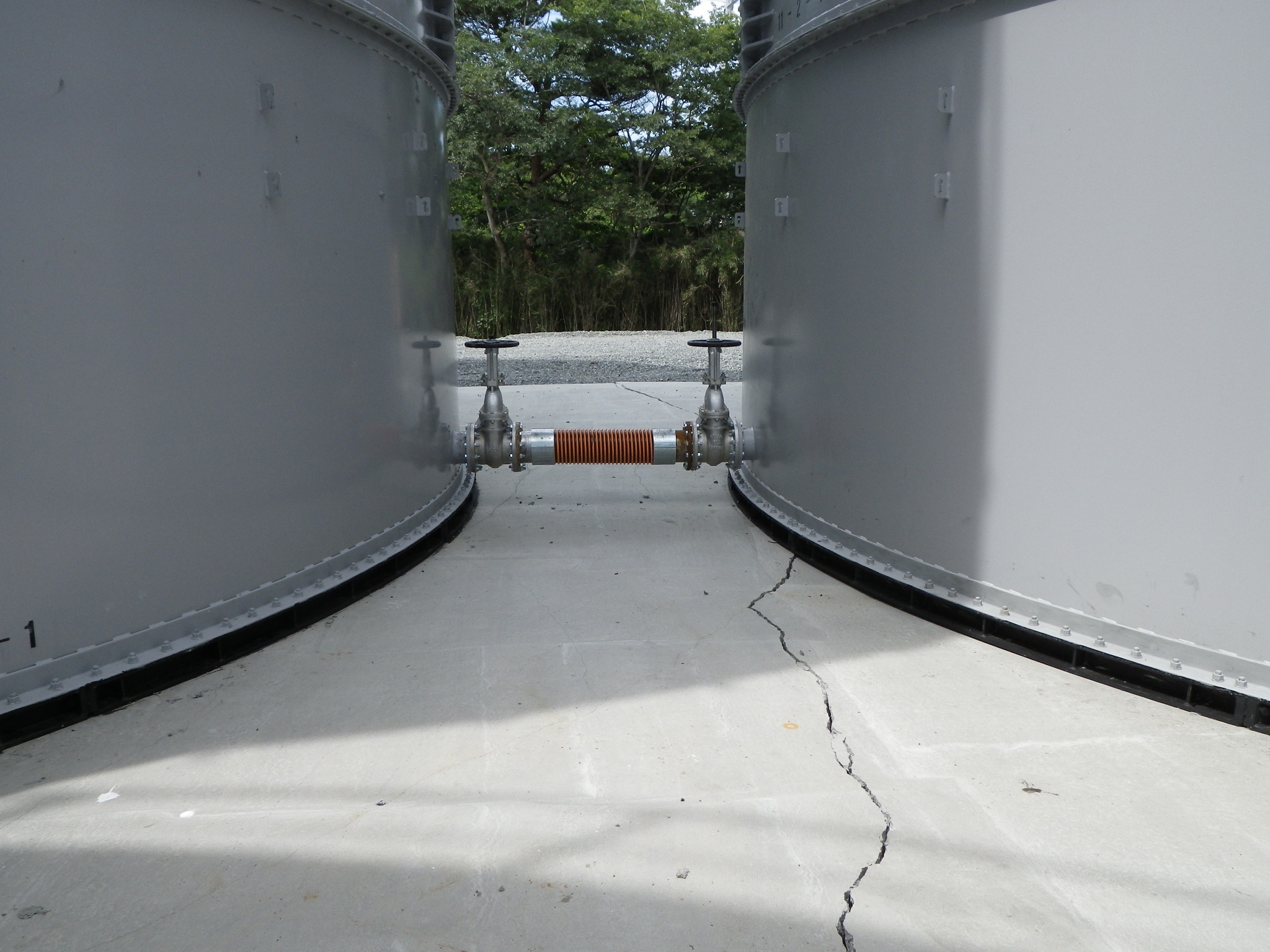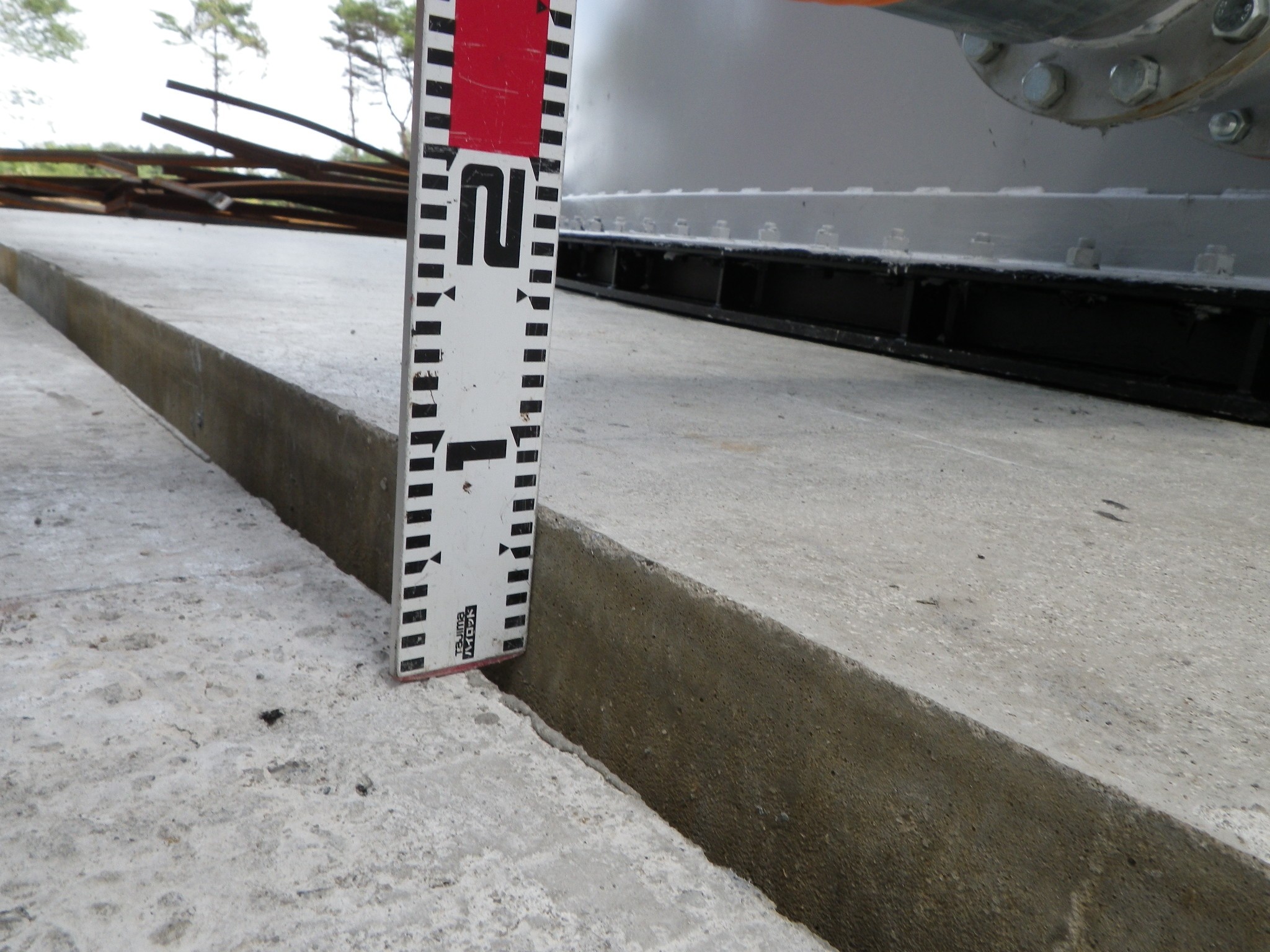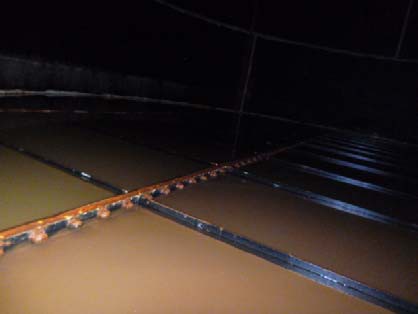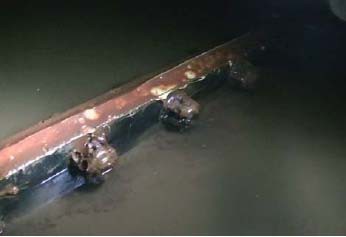http://ex-skf.blogspot.com/2013/08/russia-offers-help-to-tepco-to-clean-up.html
I remember Russia invited fishermen in Fukushima to relocate to Russian Siberia right after the start of the nuclear accident in March 2011 and to fish there, instead of trying (in vain) to make a living off the water being contaminated with radioactive materials from the plant. I don't think anyone took up the offer.
According to Bloomberg News article, Russia reiterated the offer to help, just as they had been ready in 2011 if asked by the Japanese government. The request for help never went to Russia under the DPJ administrations under Naoto Kan and Yoshihiko Noda.
For that matter, they never requested any help from any country, and they (practically) declined help when offered. TEPCO privately asked the US military for help in the first weeks of the accident, and was reportedly severely scolded by the Kan administration. The only incident I know of in which a foreign help (the US military) was accepted was to extinguish fire that broke out in Reactor 4 in March 2011.
(I said "practically" above, as what they did was to do the Sir Humphrey - "Thank you, we will be planning to form a committee to study whether it is feasible to consider accepting your offer, and we will get back to you as soon as reasonably possible, under the circumstance, if you know what we mean.".)
Russian officials say things have started to change under the new LDP administration.
From Bloomberg News (8/25/2013; emphasis is mine):
(UPDATE 8/25/2013) The layer beneath the concrete platform turned out to be not the amended soil with cement mixed in but concrete bits. Maybe that's where the RO waste water that leaked are sitting, at least part of it. The H4 area is about 8,000 square meters.
=======================
That was what TEPCO's ad hoc press conference on August 24 was about, it seems.
Three tanks including the one that is leaking were originally in the H1 area, closer to the in-the-ground water storage ponds. But when TEPCO conducted the test of the tanks by filling them with water in July 2011, it caused the land subsidence of about 20 centimeters which cracked the concrete platform.
The tanks were then disassembled, moved to the H4 area, and reassembled in September 2011, tested and came online in October 2011.
These three tanks were of different height from other tanks used for RO waste water, and were made by a different manufacturer (unnamed).
TEPCO says it was unaware that the tank No.5 in H4 area, and two others in the same area, had been disassembled, moved and reassembled.
According to the handout at the press conference on August 24, 2013,
H1 No.3 tank became H4 No.10 tank.
H1 No.4 tank became H4 No.5 tank (that is leaking).
H1 No.8 tank became H4 No.3 tank.
H4 No.5 tank has been emptied, and TEPCO is moving water from the other two tanks as precaution.
Photos of the cracked and sunk concrete platform of the H1 area, from July 2011 right after the first Reverse Osmosis Apparatus went online on 6/17/2011 (higher-capacity RO Apparatus by Hitachi didn't come on line until 8/7/2013):
(From TEPCO's Photos and Videos Library, 8/24/2013)
SUNDAY, AUGUST 25, 2013
Russia Offers Help to TEPCO to Clean Up #Fukushima I Nuke Plant
I remember Russia invited fishermen in Fukushima to relocate to Russian Siberia right after the start of the nuclear accident in March 2011 and to fish there, instead of trying (in vain) to make a living off the water being contaminated with radioactive materials from the plant. I don't think anyone took up the offer.
According to Bloomberg News article, Russia reiterated the offer to help, just as they had been ready in 2011 if asked by the Japanese government. The request for help never went to Russia under the DPJ administrations under Naoto Kan and Yoshihiko Noda.
For that matter, they never requested any help from any country, and they (practically) declined help when offered. TEPCO privately asked the US military for help in the first weeks of the accident, and was reportedly severely scolded by the Kan administration. The only incident I know of in which a foreign help (the US military) was accepted was to extinguish fire that broke out in Reactor 4 in March 2011.
(I said "practically" above, as what they did was to do the Sir Humphrey - "Thank you, we will be planning to form a committee to study whether it is feasible to consider accepting your offer, and we will get back to you as soon as reasonably possible, under the circumstance, if you know what we mean.".)
Russian officials say things have started to change under the new LDP administration.
From Bloomberg News (8/25/2013; emphasis is mine):
Russia Offers to Help Clean Up Fukushima as Tepco Calls for Help
By Yuriy Humber & Jacob Adelman - Aug 25, 2013 3:33 PM PT
Russia repeated an offer first made two years ago to help Japan clean-up its accident-ravaged Fukushima nuclear station, welcoming Tokyo Electric Power Co. (9501)’s decision to seek outside help.
As Tokyo Electric pumps thousands of metric tons of water through the wrecked Fukushima station to cool its melted cores, the tainted run-off was found to be leaking into groundwater and the ocean. The approach to cooling and decommissioning the station will need to change and include technologies developed outside of Japan if the clean-up is to succeed, said Vladimir Asmolov, first deputy director general of Rosenergoatom, the state-owned Russian nuclear utility.
“In our globalized nuclear industry we don’t have national accidents, they are all international,” Asmolov said. Since Japan’s new government took over in December, talks on cooperating between the two countries on the Fukushima clean-up have turned “positive” and Russia is ready to offer its assistance, he said by phone from Moscow last week.
After 29 months of trying to contain radiation from Fukushima’s molten atomic cores, Tokyo Electric said last week it will reach out for international expertise in handling the crisis. The water leaks alone have so far sent more than 100 times the annual norms of radioactive elements into the ocean, raising concern it will enter the food chain through fish.
‘Last to Realize’
The latest leak of 300 metric tons of irradiated water prompted Japan’s nuclear regulator to label the incident “serious” and question Tokyo Electric’s ability to deal with the crisis, echoing comments made by Prime Minister Shinzo Abe earlier this month. Zengo Aizawa, a vice president at Tepco, as the Tokyo-based utility is known, made the call for help at a press briefing in Japan’s capital on Aug. 21.
“It was clear for a long time that Tepco was not adequately coping with the situation,” Asmolov said. “It looks like Tepco management were the last to realize this,” he said. “Japan has the technologies to do this, but they lacked a system to deal with this kind of situation.”
The Fukushima accident of March 2011 is the world’s biggest nuclear disaster since the Soviet Union faced the explosion at Chernobyl in 1986.
So far, Tokyo’s solution to cooling melted nuclear rods at Fukushima that otherwise could overheat into criticality, or a self-sustained nuclear chain reaction, has been to pour water over them. That’s left more than 330,000 tons of irradiated water in storage tanks at the site so far. The water is treated to remove some of the cesium particles in it, which in turn leaves behind contaminated filters.
...The idea of pumping water for cooling was never going to be anything but a “machine for generating radioactive water,” Asmolov said. Other more complex methods such as the use of special absorbents like thermoxide to clean contaminated water and the introduction of air cooling should be used, he said.
Russia’s nuclear company, Rosatom, of which Rosenergoatom is a unit, sent Japan a 5 kilogram (11 pound) sample of an absorbent that could be used at Fukushima almost three years ago, Asmolov said. It also formed working groups ready to help Japan on health effect assessment, decontamination, and fuel management, among others, Asmolov said. The assistance was never used, he said.
“Since the arrival of the new Japanese government, the attitude’s changed,” he said. “So far the talks have been on a diplomatic level, but they are much more positive. And we remain open to working together on this issue. To follow developments I monitor Fukushima news every morning.”
Tap Experts
Japan can tap experts in France and the U.S. as well as Russia to help it tackle the situation at Fukushima, he said.
The U.S.’s long history with atomic research, including the nuclear weapons site at the Hanford Engineer Works in Washington state, has provided expertise in cleaning up contaminated sites, said Kathryn Higley, who heads the nuclear engineering and radiation health physics department at Oregon State University in Corvallis.
“We have individuals that are working on groundwater contamination and using technology and developing new technologies to clean up strontium in groundwater, for example, at the Hanford site,” she said. “So there are individuals around the world that have been doing this and certainly they would be more than willing to help in this process.”
France’s Areva SA (AREVA) had designed a radiation filtration system that was used for several months at the Fukushima site as temporary cover before Tepco installed its own facilities. Japanese delegations have also visited U.S. nuclear waste sites together with CH2M Hill Cos., an engineering company based in Englewood, Colorado.
This month a group of 17 Japanese companies including Toshiba Corp. (6502) and Mitsubishi Heavy Industries Ltd. (7011) formed an association, called International Research Institute for Nuclear Decommissioning, to support Tepco’s clean-up efforts.
(Full article at the link)
I don't think much at all about the industry association mentioned in the last paragraph above. It has been set up by the administrative guidance from Ministry of Economy, Trade and Industry and Agency of Natural Resources and Energy (the one who "assumed" 300-tonne groundwater "leak"), with nuclear and radiation scientists and experts on the panel, which includes scientists like Professor Sekimoto of Tokyo University.
I remember Professor Sekimoto very well, who appeared on NHK non-stop right after it was apparent that there was something wrong at Fukushima I Nuclear Power Plant after the earthquake and tsunami on March 11, 2011. To the jittery nation, he spoke calmly and nonchalantly that the whole thing was no big deal, even after the explosion that blew off the top floor of Reactor 1.
The METI consortium looks like an effort to defend the turf, so to speak, and probably to prevent, in an unofficial way, TEPCO from directly seeking help.
Big money at stake in decommissioning the plant, although I doubt that the motive is all about money. It may be a smart move for Prime Minister Abe if he accepts the offer.
Rosatom by the way is the one who's building a floating nuclear power plant.
I remember Professor Sekimoto very well, who appeared on NHK non-stop right after it was apparent that there was something wrong at Fukushima I Nuclear Power Plant after the earthquake and tsunami on March 11, 2011. To the jittery nation, he spoke calmly and nonchalantly that the whole thing was no big deal, even after the explosion that blew off the top floor of Reactor 1.
The METI consortium looks like an effort to defend the turf, so to speak, and probably to prevent, in an unofficial way, TEPCO from directly seeking help.
Big money at stake in decommissioning the plant, although I doubt that the motive is all about money. It may be a smart move for Prime Minister Abe if he accepts the offer.
Rosatom by the way is the one who's building a floating nuclear power plant.
Japan needs to overcome its stubborn pride that it doesn't need help - right now they don't know what's going on , can'y give answers to questions and frankly they need another opinion as to what should be tried next ?
http://fukushima-diary.com/2013/08/press-for-how-long-will-it-take-to-settle-down-the-contaminated-water-problem-%E2%86%92-tepco-president-we-dont-know/
(Press) “For how long will it take to settle down the contaminated water problem?” → Tepco president “We don’t know”
Posted by Mochizuki on August 26th, 2013 · No Comments
About the contaminated water problem, Tepco’s president held a press conference on 8/26/2013.
Press inquired for how long he / Tepco estimates it is going to take to resolve the increasing contaminated water problem.
For this question, Tepco’s president Hirose commented he has no idea about that.
The vice president Aizawa stated they are going to start investigating the drain system nearest to the sea, which Tepco claims is the groundwater contamination source.
http://fukushima-diary.com/2013/08/chinese-media-may-contaminated-water-affect-neighboring-countries%E2%86%92/
(Chinese media) “May contaminated water affect neighboring countries?” → (Tepco) “We don’t know”
Posted by Mochizuki on August 23rd, 2013 · 2 Comments
In the press conference of 8/23/2013, Tepco stated that they can’t make a comment about how the contaminated water leakage affect neighboring countries.
This was the answer for the question of China Central Television. They mentioned Soma city fishery cooperative having given up the test fishing due to the marine contaminated. They asked Tepco’s spokesman about the possibility that the contaminated water leakage causes the same situation to the neighboring countries such as China, South Korea etc..
SUNDAY, AUGUST 25, 2013
#Fukushima I Nuke Plant: RO Waste Water Tank That Leaked Had Been Moved from Another Area After Ground Sank
(UPDATE 8/25/2013) The layer beneath the concrete platform turned out to be not the amended soil with cement mixed in but concrete bits. Maybe that's where the RO waste water that leaked are sitting, at least part of it. The H4 area is about 8,000 square meters.
=======================
That was what TEPCO's ad hoc press conference on August 24 was about, it seems.
Three tanks including the one that is leaking were originally in the H1 area, closer to the in-the-ground water storage ponds. But when TEPCO conducted the test of the tanks by filling them with water in July 2011, it caused the land subsidence of about 20 centimeters which cracked the concrete platform.
The tanks were then disassembled, moved to the H4 area, and reassembled in September 2011, tested and came online in October 2011.
These three tanks were of different height from other tanks used for RO waste water, and were made by a different manufacturer (unnamed).
TEPCO says it was unaware that the tank No.5 in H4 area, and two others in the same area, had been disassembled, moved and reassembled.
According to the handout at the press conference on August 24, 2013,
H1 No.3 tank became H4 No.10 tank.
H1 No.4 tank became H4 No.5 tank (that is leaking).
H1 No.8 tank became H4 No.3 tank.
H4 No.5 tank has been emptied, and TEPCO is moving water from the other two tanks as precaution.
Photos of the cracked and sunk concrete platform of the H1 area, from July 2011 right after the first Reverse Osmosis Apparatus went online on 6/17/2011 (higher-capacity RO Apparatus by Hitachi didn't come on line until 8/7/2013):
(From TEPCO's Photos and Videos Library, 8/24/2013)
After the crack happened, the tanks were disassembled, and moved to the H4 area and reassembled after the soil was amended in the H4 area.
As I showed the diagram of the tank in my previous post, the bottom panels are SS400 with 16-millimeter thickness, riveted together.
TEPCO didn't find any leak on the visible part of the tank, which leaves only one possible leak location: the bottom. TEPCO's handout for the press on August 23, 2013 admits as much (English labels and added explanation are by me):
As I showed the diagram of the tank in my previous post, the bottom panels are SS400 with 16-millimeter thickness, riveted together.
TEPCO didn't find any leak on the visible part of the tank, which leaves only one possible leak location: the bottom. TEPCO's handout for the press on August 23, 2013 admits as much (English labels and added explanation are by me):
Photos of the bottom of No.5 tank after the water was emptied (from TEPCO's Photos and Videos Library 8/24/2013):
Meanwhile, Mainichi Shinbun interviewed the chairman of a TEPCO subcontractor in Iwaki City in Fukushima who Mainichi claims is knowledgeable about how the contract for the tanks was made between TEPCO and the general contractor whom this chairman knows well.
According to the chairman, it was just as "Sunny" said in his tweet (see my previous post): "Bad but Cheap", and quick.
From Mainichi Shinbun (8/25/2013; part):
According to the chairman, it was just as "Sunny" said in his tweet (see my previous post): "Bad but Cheap", and quick.
From Mainichi Shinbun (8/25/2013; part):
廃炉作業に参加している東電協力会社(福島県いわき市)の会長(72)は毎日新聞の取材に「タンクは工期が短く、金もなるべくかけずに作った。長期間耐えられる構造ではない」と証言した。
The chairman of a TEPCO affiliate company (in Iwaki City, Fukushima Prefecture) which participate in the decommissioning work said to Mainichi Shinbun, "Tanks were made on short construction period and as economically as possible. They were not made to last a long time."会長が東電幹部やゼネコン関係者から聞いた話では、今回水漏れを起こしたタンクは、設置工事の期間が短かった上、東電の財務事情から安上がりにすることが求められていた。タンクは組み立て式で、猛暑によってボルトや水漏れを防ぐパッキンの劣化が、通常より早まる可能性も指摘されていたという。
From what the chairman heard from TEPCO managers and the general contractor involved in the project, the tanks including the one that leaked this time had to be installed in a short time frame, and due to TEPCO's financial situation they were made as economically as possible. The tanks were assembled, and it was pointed out that hot summer heat may quicken the deterioration of bolts and packing [gasket] used to prevent leaks.
会長は「野ざらしで太陽光線が当たり、中の汚染水の温度は気温より高いはず。構造を考えれば水漏れは驚くことではなく、現場の感覚では織り込み済みの事態だ。現場の東電の技術スタッフも心配はしていた」と明かす。
The chairman said, "They are out in the open in direct sunlight. I assume the temperature of the contaminated water inside the tanks are higher than the air temperature. Given how they were built, the leak is not surprising. As far as the site managers (workers) are concerned, the situation [leak] has been factored in. TEPCO's engineering staff at the plant were concerned."
Independent journalist Ryuichi Kino has repeatedly asked TEPCO in the press conference at every opportunity, "Are these tanks safe? Are you going to replace them with more secure, welded tanks?" He first asked the question when the first of these tanks (smaller, square tanks that were also assembled from steel sheets), which were to be used to store the water treated by Areva's co-precipitation system and Kurion's cesium absorption tower (and that was in June 2011). Kino kept asking the question for the next two-plus years, and TEPCO's answer at the press conference was always "We plan to continue to use them, we have countermeasures (like concrete platform and dam, sand bags, patrol by the workers) in place."
It is understandable that TEPCO needed something quick in the early months of the accident. But not to have replaced the quick fix with more permanent solution is no excuse. If money was really the (only) issue, the company should have made that abundantly clear to the largest shareholder (the national government) a long time ago and explored the ways to raise enough money.
But that's too much to ask from a company who couldn't speak up against the meddling Kan administration in the early days of the accident, couldn't transport the necessary batteries without proper permit on the highway, and put all the burden of dealing with the government on the plant manager who was in the middle of fighting triple core melts.
It is understandable that TEPCO needed something quick in the early months of the accident. But not to have replaced the quick fix with more permanent solution is no excuse. If money was really the (only) issue, the company should have made that abundantly clear to the largest shareholder (the national government) a long time ago and explored the ways to raise enough money.
But that's too much to ask from a company who couldn't speak up against the meddling Kan administration in the early days of the accident, couldn't transport the necessary batteries without proper permit on the highway, and put all the burden of dealing with the government on the plant manager who was in the middle of fighting triple core melts.








No comments:
Post a Comment